¿Prefiere este estudio de caso en pdf?
¡Aquí lo tienes!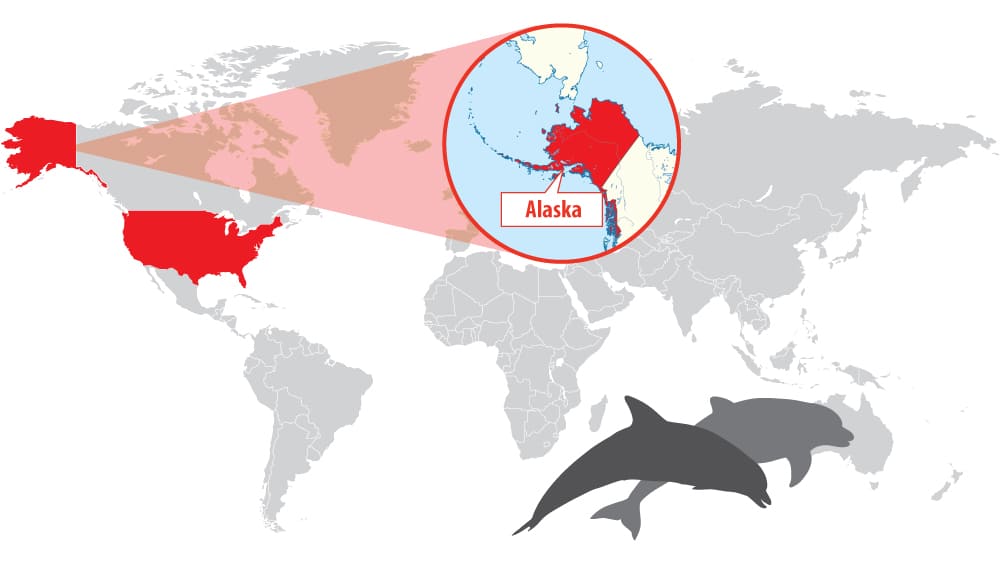
Ubicación de Alaska (Estados Unidos de América)
Estos animales tienen estrictas pautas de comportamiento estacional, permaneciendo en mar abierto durante el invierno y migrando a zonas más cálidas en verano. Permanecen cerca del continente, en estuarios y aguas poco profundasa veces incluso recorriendo ríos de varios kilómetros. Por un lado, la estancia en estuarios y ríos proporciona al animal refugio y un estímulo metabólico que facilita la renovación estacional de la capa epidérmica. Por otro lado, la la contaminación ambiental y acústica generada por las actividades humanas representa un peligro real a estos animales. Las sustancias contaminantes tienen un efecto adverso en los animales: aumento de los casos de cáncer, patologías reproductivas y deterioro del sistema inmunitario. Se ha demostrado que, en determinadas zonas, la frecuencia del cáncer es mayor y los expertos creen que esta afección podría estar directamente relacionada con los ambientes contaminados. En 1972, el Congreso de los Estados Unidos promulgó la Ley de Protección de Mamíferos Marinos (MMPA)en el que se prohíbe cazar, matar, capturar y/o acosar a cualquier mamífero marino en aguas estadounidenses. No obstante, La contaminación y las actividades humanas siguen perjudicando gravemente la situación de esta especie. En febrero de 2017, un fuga de gas natural se detectó a unos 6 kilómetros de la costa, en la ensenada de Cook, cerca de Nikiski (Alaska). La fuga se comunicó inmediatamente a las autoridades de Alaska, que respondieron con detallados y requisitos de seguimiento debido a que la zona es un hábitat crítico para las belugas en peligro de extinción. Empresa asociada de Libelium Soluciones Aridea (Virginia Occidental) se encargó de diseñar una solución para controlar la fuga. Aridea desarrolla tecnología de control para los retos medioambientales. El equipo de Aridea Solutions imagina una época en la que los parámetros medioambientales se controlen continuamente en tiempo real y puedan comunicarse entre sí, con las máquinas y con las personas, lo que ayudará a obtener mejores resultados para nuestras industrias y para el medio ambiente en el que vivimos.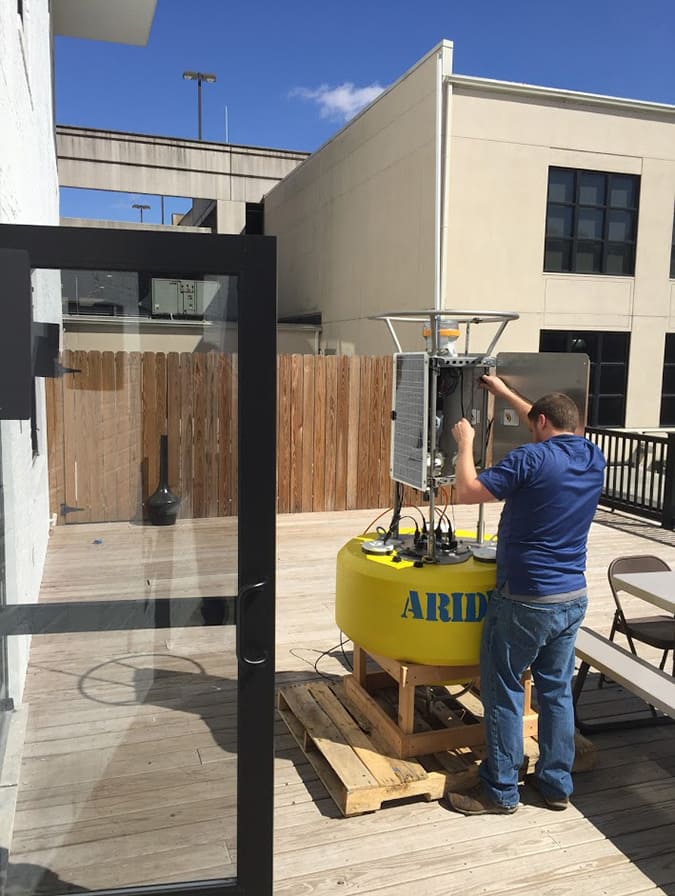
Montaje de la boya en la sede de Aridea en Virginia Occidental
Tras varias horas intensas de búsqueda de opciones, el equipo de Aridea ideó que una boya sería la mejor plataforma para esta aplicación. La boya necesitaba sensores de cuatro fabricantes distintos. Aridea recurrió a Libelium para que le proporcionara la plataforma Plug & Sense! para permitir la interconexión de varios protocolos industriales necesarios para interconectar los sensores. El Plug & Sense! también permitía fácil agregación y transmisión de datos a un barco que podría estar a varias millas de la boya, utilizando un 900 MHz protocolo de comunicación. Aridea diseñó una boya equipada con la plataforma de sensores inalámbricos de Libelium a controlar el aire y agua cerca de la fuga que afectan a las ballenas beluga y otros mamíferos acuáticos. Este proyecto consistía en vigilar el metano, oxígeno y CO2 niveles por encima de la superficie del agua. Al mismo tiempo que se controla el metano disuelto, el O2 y otros parámetros directamente bajo la superficie del agua.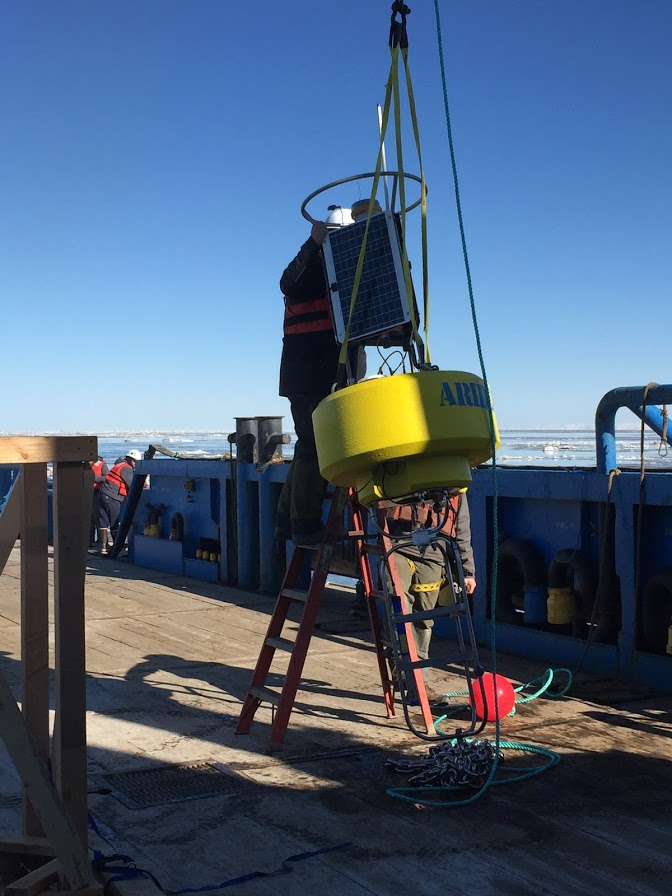
Instalación de la boya en Cook Inlet (Alaska)
Los plazos del proyecto eran muy ajustados, por lo que los ingenieros de Aridea trabajaron diligentemente durante dos semanas para diseñar, construir y enviar la plataforma de vigilancia basada en una boya al lugar afectado en Alaska. Una vez in situ, dos ingenieros de Aridea acompañaron a la boya para ayudar a despliegue, formación y calibración de sensores. La boya funcionó según lo previsto y proporcionó datos clave para los científicos. para analizar y ayudar rápidamente a cuantificar el impacto medioambiental global.| Parámetros medidos en el aire | Parámetros medidos en el agua |
|
|
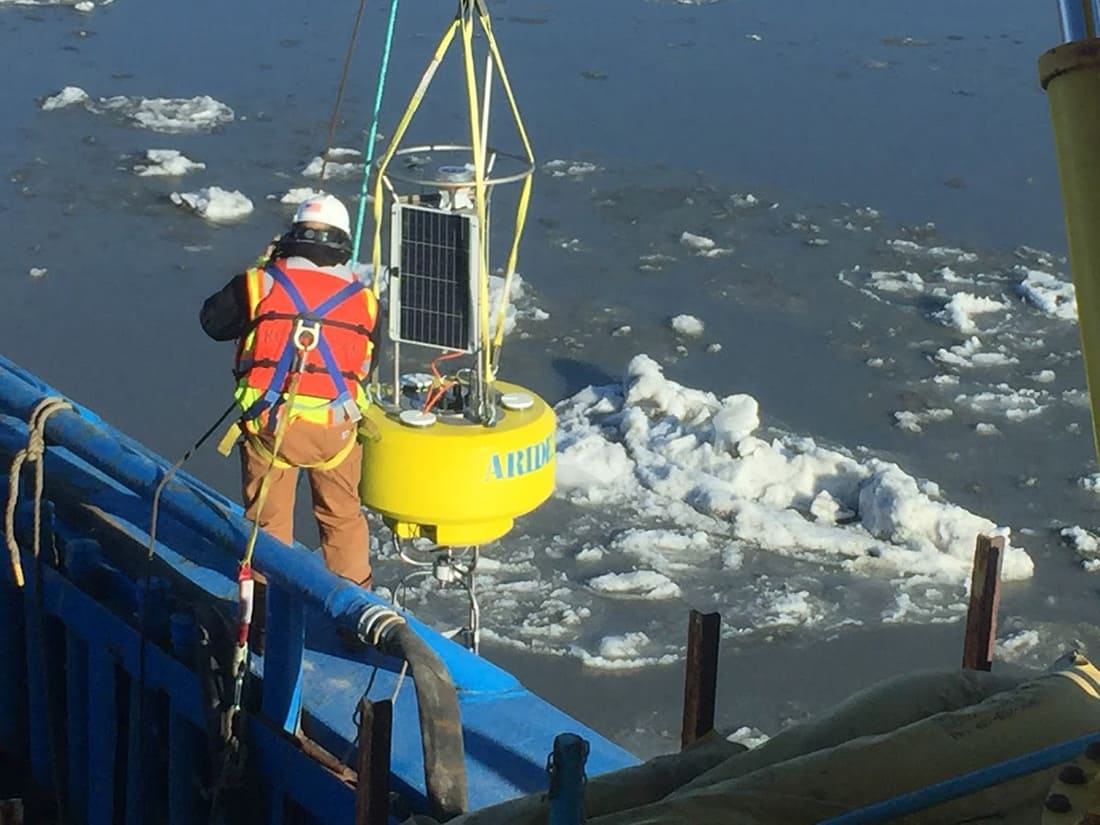
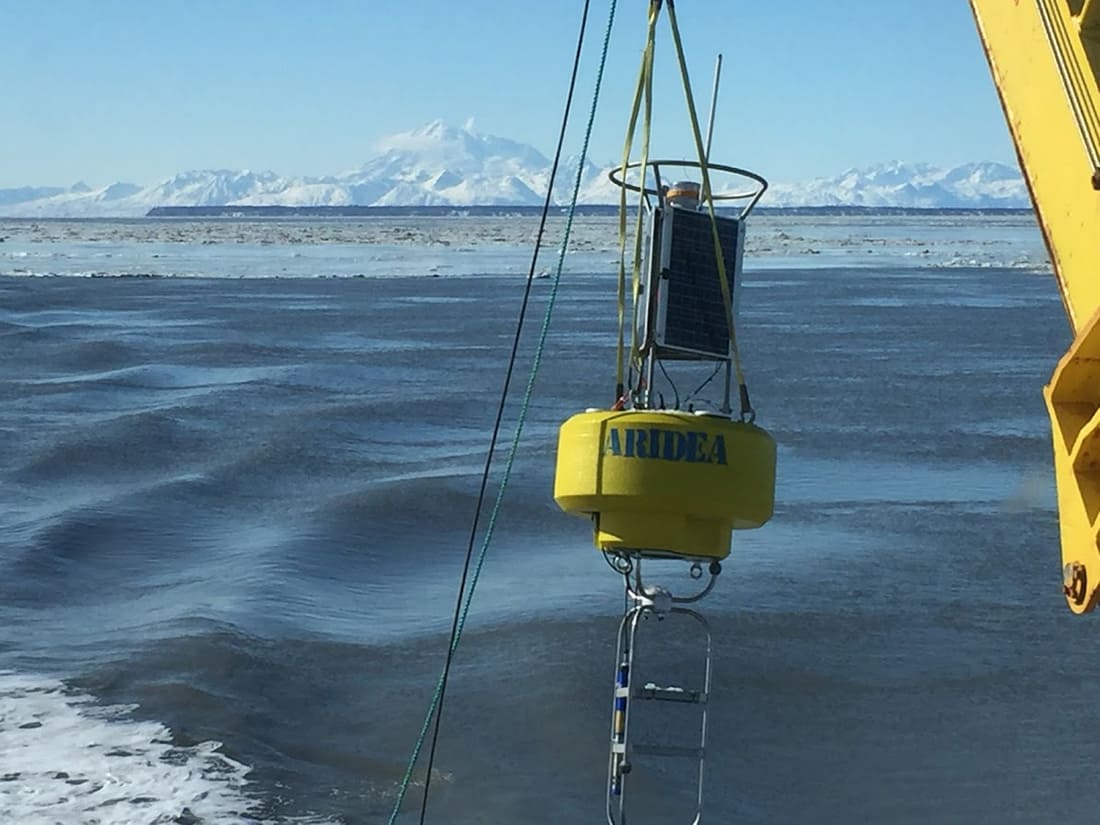
Técnicos instalando la boya de Aridea en el agua
El sistema de boyas se desplegó varias veces controlar e informar sobre las condiciones medioambientales hasta que las condiciones meteorológicas permitieron a los buzos reparar definitivamente la fuga. El sistema de boyas diseñado e integrado por Aridea demostró ser una herramienta clave para proporcionar datos cruciales en el análisis del impacto ambiental de la fuga hasta que se completaran estas reparaciones.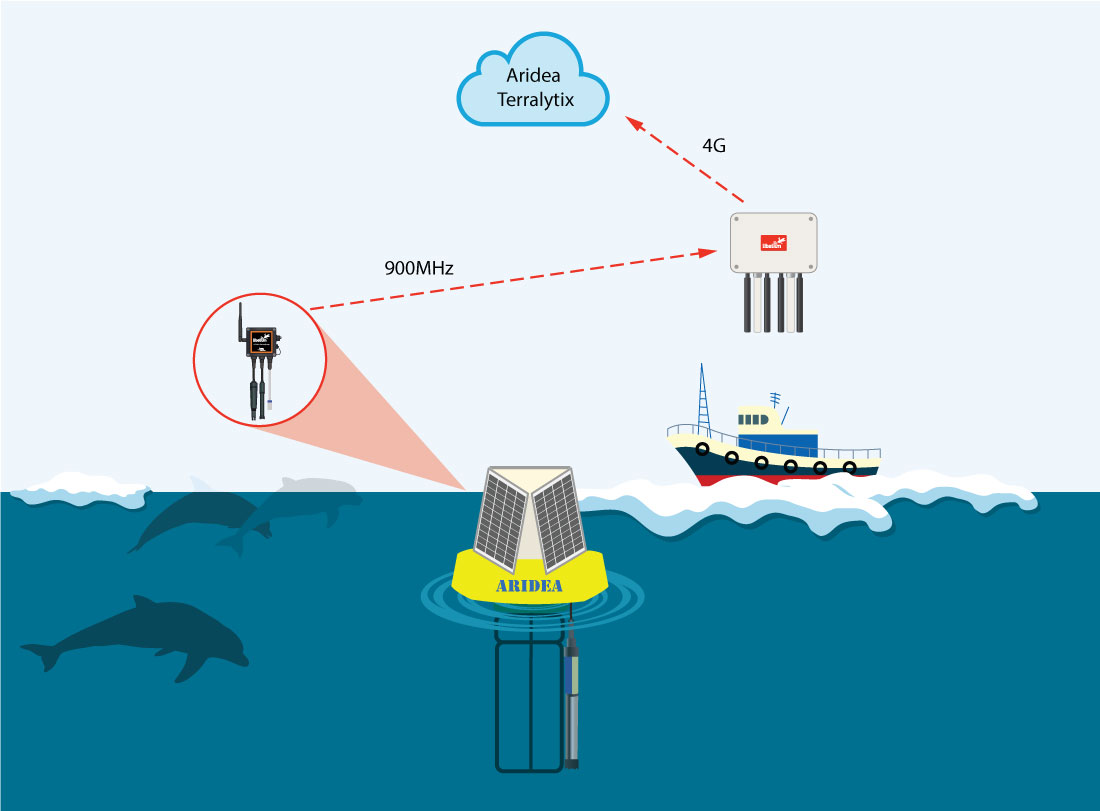
Esquema de la solución de Aridea en Cook Inlet (Alaska)
Una vez in situ, el despliegue de la boya se vio dificultado por la cobertura de hielo y los movimientos debidos a las temperaturas extremas y los cambios de marea en la zona. La boya y los sensores elegidos para el despliegue se diseñaron para soportar estas condiciones extremas. Debido a las restricciones impuestas por los guardacostas en torno al lugar de la fuga, la boya tenía que poder desplazarse a la deriva por la zona afectada cronometrando los ciclos de las mareas en la zona. La boya se desplegó mediante una grúa montada en el buque. Una vez que la boya quedó a la deriva en la zona afectada por la fuga, el buque fue a veces A 1-2 millas de la boya. Sin embargo, la comunicación con la boya se mantuvo gracias a la flexibilidad de la capacidad de 900Mhz de largo alcance del Waspmote de a bordo.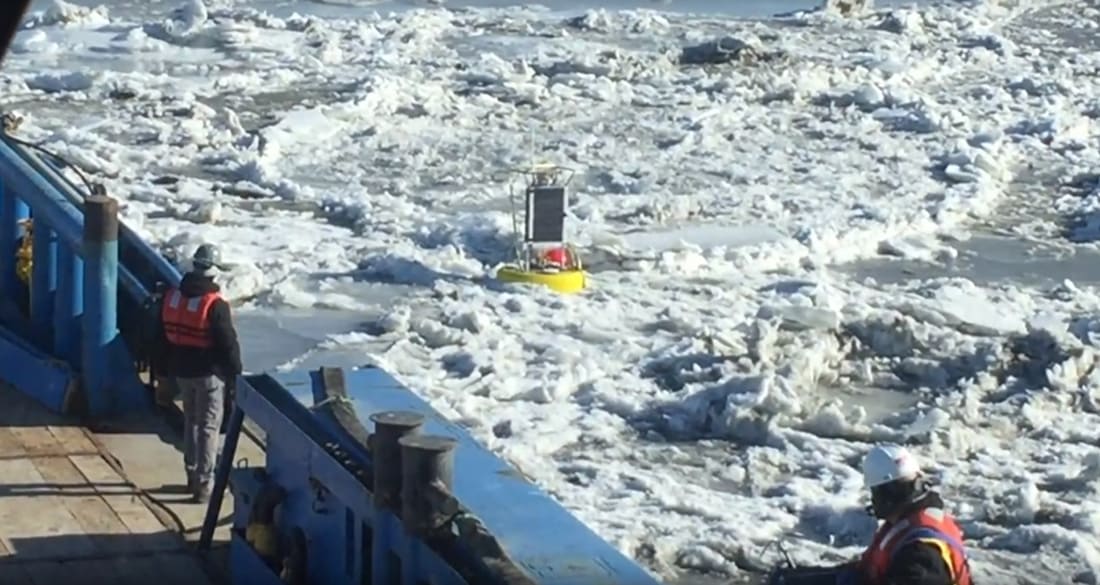
La boya de sensores de Aridea funcionando en las aguas heladas de Cook Inlet.
Rob Moore, Director de Ingeniería de Aridea, declaró: "Un atributo clave en nuestro éxito para cumplir este agresivo calendario y las difíciles condiciones ambientales fue nuestra elección de proveedores de hardware. La elección de Aridea de utilizar La plataforma Waspmote de Libelium permitió una integración rápida y flexible de sensores de múltiples proveedores".Este proyecto de IoT contribuye a alcanzar los siguientes Objetivos de Desarrollo Sostenible:
Más información:
Referencias:
¿Quieres recibir estas y otras noticias sobre IoT directamente en tu correo electrónico?
🔔 ¡Suscríbete a nuestro boletín y no te pierdas nada! Aprenderás sobre IoT y cómo ayuda a hacer del mundo un lugar más sostenible y eficiente.
¡Inscríbeme!Mantente al día en IoT
Únete a la Comunidad Libelium y recibe las últimas noticias sobre IoT, eventos importantes, proyectos, casos de éxito y mucho más en su inbox.
Más de 18 años de experiencia en IoT.


















© Libelium Comunicaciones Distribuidas S. L. | Términos y condiciones | Política de privacidad | Política de Cookies | Política de Seguridad | Canal del informante